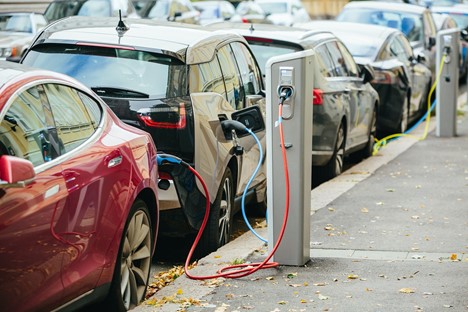Electric vehicles will likely not deliver the necessary carbon reduction many people are expecting. In Norway, electric vehicle sales have gone from zero to nearly 60% penetration between 2010 and 2019. Despite such a dramatic shift away from oil, Norway’s carbon intensity has declined by 10% compared with 11% in the US where EVs remain less than 2% of all vehicle sales.
Although these results might seem improbable, the explanation has to do with the physical limitations of the various technologies.
Wind and solar are extremely inefficient generators of electricity due to their low energy density and their intermittency. In the coming weeks, we will release a podcast that goes into much greater detail about these shortcomings. In summary, a solar panel likely only dispatches between 12% and 20% of its rated capacity due to the intermittency of sunshine. A wind turbine is somewhat better, but still less than 25%. As a result, excess capacity must be built to generate the necessary electricity. Moreover, the power must be “buffered” by a storage system to smooth out the inherent variability coming from both short-term dislocations (clouds and periods of calm), as well as different patterns between day and night.
Low load factors and “buffering” of intermittency results in poor “energy return on energy invested” (EROEI). As much as 25–60% of the energy generated in a renewable system is consumed internally, compared with 3% for a modern gas plant.
In his excellent work, Energy and Civilization, Professor Smil describes society’s ongoing adoption of new technologies. A theme that runs through his work is how every new major “prime mover” is able to convert energy into useful work more efficiently than what came before. According to our models, wind and solar would mark the first time we have seen a widespread shift into a much less efficient source of energy conversion. It has never happened in the past, and the only way it can happen in the future is if governments subsidize wind and solar (as is being done right now), or outlaw old hydrocarbon-based technologies—now being threatened. In either case (subsidy or outlaw), government intervention is the only way people would likely adopt new energy conversion technologies with inferior efficiencies.
It is difficult to forecast the impact of transitioning from a system where 3% of all energy is consumed internally to one where more than a third is lost. To the extent solar and wind facilities do not achieve their target lifespans (and there is ample evidence to suggest this is happening), the results will be even worse.
Solar and wind’s low EROEI also impacts their carbon emissions. While billed as being “carbon free,” solar and wind generate CO2 during their construction and maintenance. To the extent overbuilding and battery backup is required to allow for baseload power, CO2 emissions increase dramatically. This partially explains why German carbon intensity only fell by 12%, despite having among the highest renewable penetration in the world.

Image Source: iea.org
Electric vehicles also involve energy intensive lithium-ion batteries. Few realize how much energy is embedded in an electric vehicle before it is ever plugged in. Over the life of a typical EV, nearly 40% of the total energy goes into manufacturing the battery. The IEA expects electric vehicles will represent nearly 15% of total transportation energy by 2040. We calculate this equates to approximately 850 mm EVs and nearly 65 terawatt hours of batteries. This is a staggering amount considering global lithium-ion manufacturing capacity is currently less than 0.4 terawatt hours per year. These batteries will require an incredible 2 billion tonnes of oil equivalent to build.
For more of our own thinking on what a feasible carbon emission reduction plan must entail, we encourage you to read our Q4 2020 commentary. Available below.


